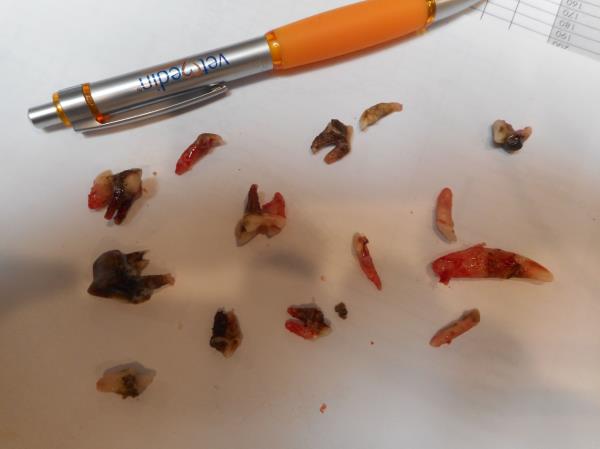A Typical Dog Dental – With Pictures
What to Expect at a Dog Dentist.
Webster is your typical toy poodle cross – and one of the most popular small breeds of dogs in Australia. He is 10 years old and was presented to for a dental second opinion. Did Webster need a dental ? His older owners have noticed blackening of the teeth. Dental disease is a genetic problem in certain breeds and toy poodles are very likely to have dental problems. Webster was seen in late Jan 2016.
The oral cavity before the doggy Dental. Note the thick plaque and Tartar build up on the teeth especially the carnasial tooth.
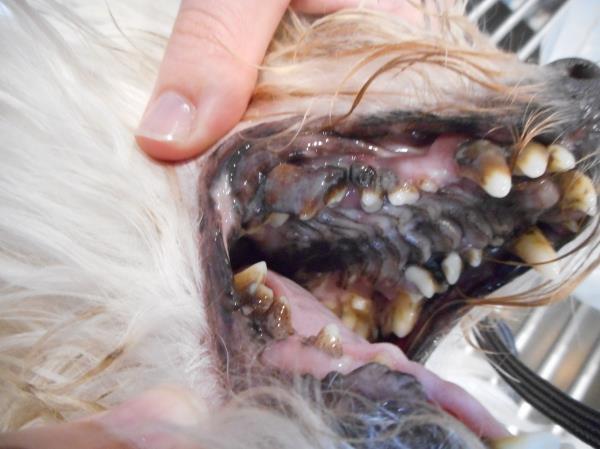
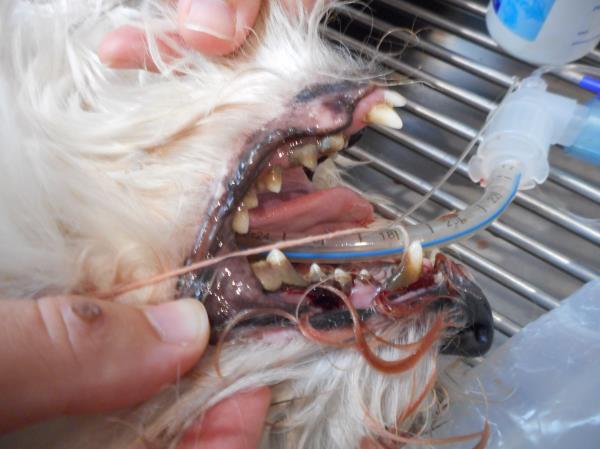
Webster was presented to the our Melbourne Veterinary Dentist, on the 25 of January 2016 -Websters oral cavity was infected – and a diagnosis of advanced dental disease was made.
- The initial consultation – This was the first visit for a dog dental examination, and a dental second opinion with Dr Phil an experienced animal dentist, and the dog dental was discussed – an estimate was given – and the owners could either book the canine dental procedure or think about it.
- An estimate of $750 was given to cover the cost of the dental( see the pictures showing the before and after and how much was dog dentistry was done)
- A two week antibiotic injection – as Webster was difficult to give tablets to. A LONG ACTING injection was used instead of tablets . As Webster weighed 5 kg the two week cephalexin antibiotic injection was not much more expensive than tablets.
- The hospital admission, for the pet to relax and get comfortable before the dental procedure and postoperative hospitalization , a warm cuddly cage with lots of bedding and heating to allow gentle recovery from the doggy dental anesthetic.
- The set up and placement of an intravenous drip for fluids during the vet dentist procedure – maintaining hydration and blood pressure is mandatory for the safety of the procedure and is done on all veterinary dentist cases.
- The premedication – which includes sedation and pain relief before the anesthetic is given for all doggie dentals.
- The animal dentist Anesthetic – first induction to get the dental patient to “go to sleep”
- The endotracheal intubation (see the picture) put a tube into the windpipe to stop dental material being breathed in.
- Gas anesthesia for the next hour and pure oxygen during recovery from the dental – the canine dental is done under gas anesthetic.
- First the teeth are cleaned using and ultrasonic scaler hand piece. It is the same ultrasonic scaler used by my human specialist dentist a periodontist.
- Dental extraction in this case 15 teeth where removed – about 1 hour of extractions.
- Dental surgery – stitching up the gums – some canine teeth have very long roots and gum flaps needed to be closed after the extraction – else there would be a large hole in the mouth.
- Root planning and flushing of the tooth gingivial surface
- Vet dentist polishing of the remaining teeth – to try and create a surface to prevent further plaque build up.
- Post operative anti inflammatory inj and pain relief medication to go home with.
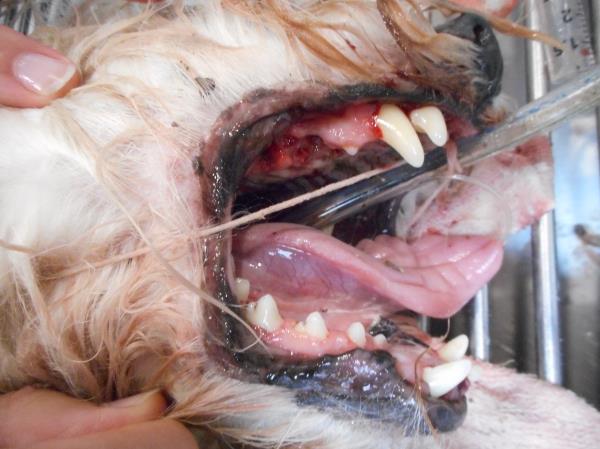
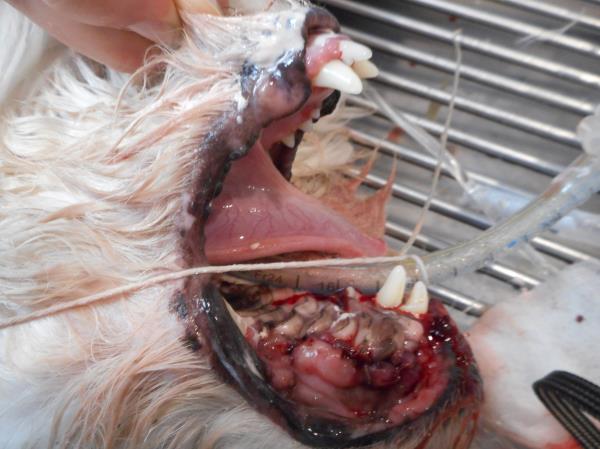
Beautiful outcome – a New oral cavity ! pain free and bacteria free. Such beautiful white teeth, and a clean oral cavity after the veterinary scaling and Dental Polishing . Note the stitching closed of the gums.
The likely outcome is a giving Webster A “new life” a healthier pain free life.
In about 6 months Webster will have his oral cavity evaluated again And dental radiology is considered.
Can the dog eat without teeth ? YES ~!! much easier than eating with painful rotten teeth and infected gums. Webster only has to “hunt” his food from the dog food bowel, we encourage smaller pellets and slightly softer food.
For preventative veterinary care – to prevent your pet needing a dental see the page.
